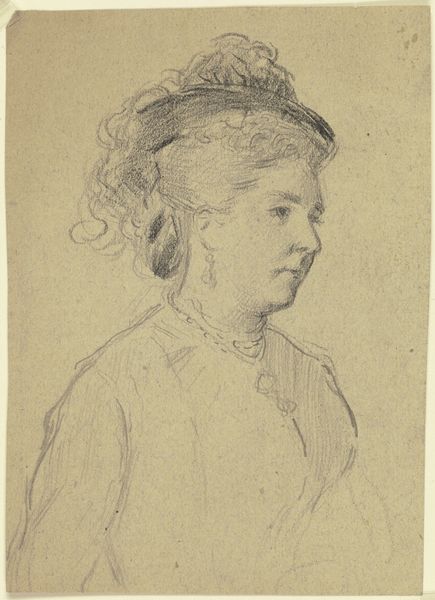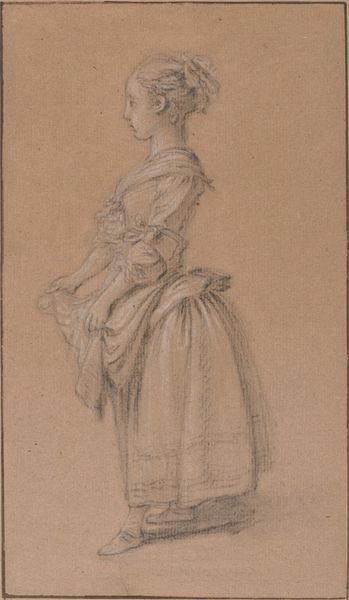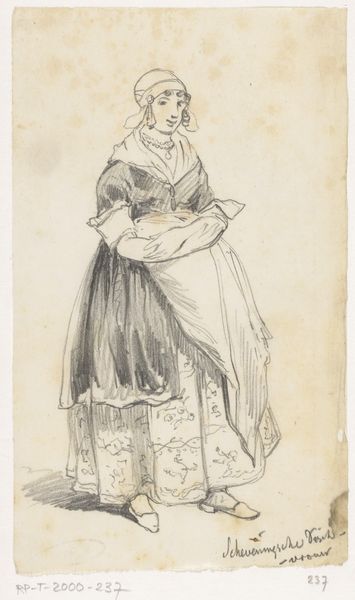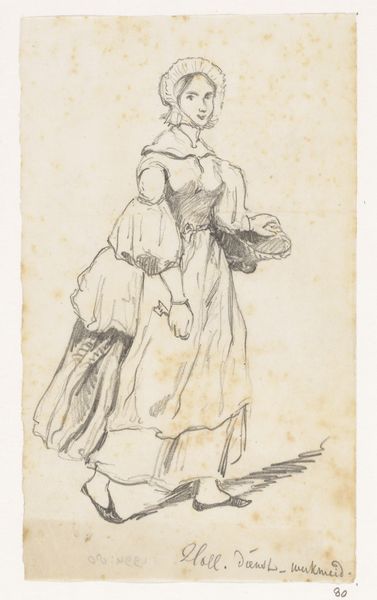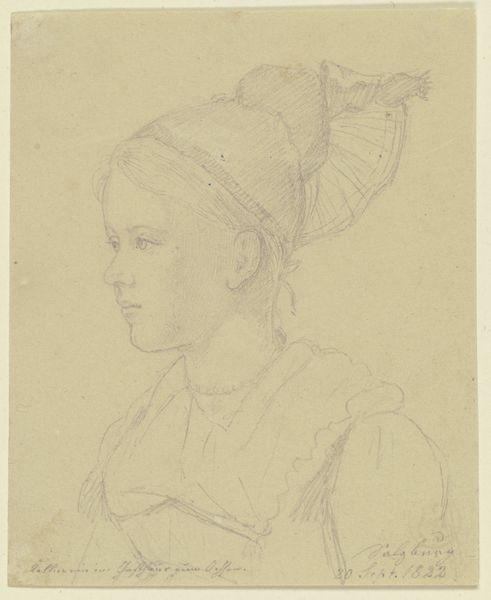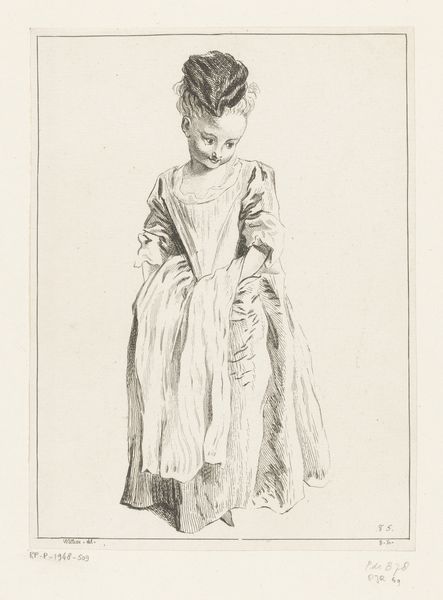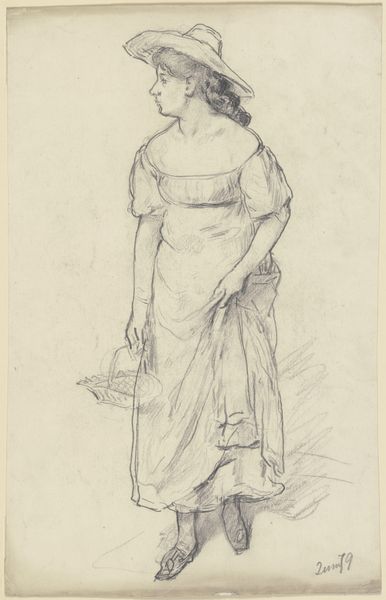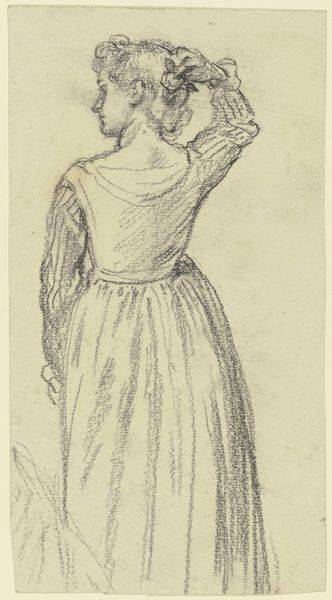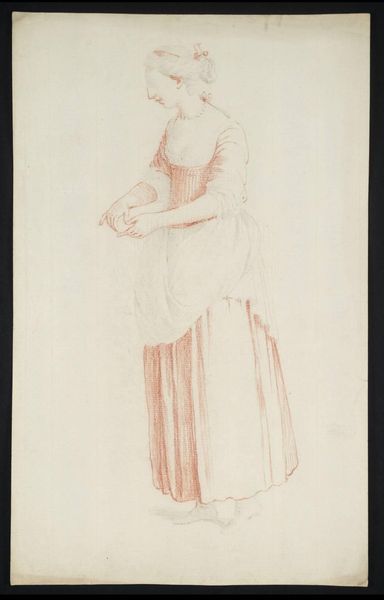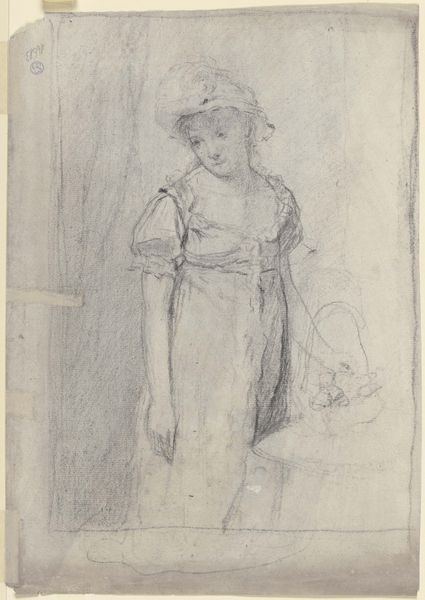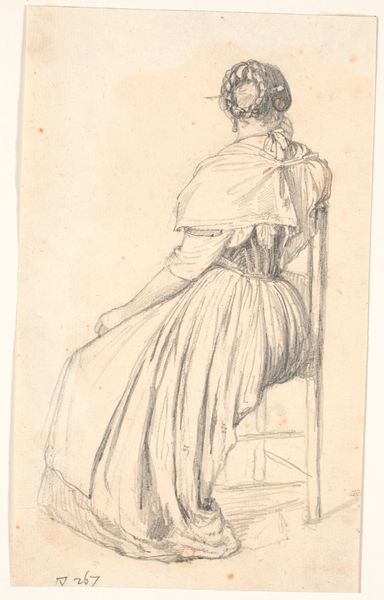
drawing, pencil
#
portrait
#
drawing
#
pencil sketch
#
figuration
#
pencil drawing
#
pencil
#
rococo
Dimensions: 6 7/16 x 4 7/16 in. (16.3 x 11.2 cm)
Copyright: Public Domain
Editor: This is Paul Sandby’s pencil drawing, "Lady Amelia D'Arcy," created sometime between 1760 and 1764. The red chalk gives the figure a striking, almost ghostly quality, but what I find most intriguing is the subject’s gaze, directed upwards, creating a strong diagonal. What compositional elements stand out to you? Curator: The first thing that grabs my attention is indeed the directional force, the verticality implied by her upward gaze. Observe how Sandby employs the diagonal not just through her sightline, but echoed in the gentle slope of her shoulders, subtly counterbalanced by the slight contrapposto of her stance. This creates a dynamic tension within the two-dimensional space. Note too the precision in rendering the fabric. The interplay of line and shadow models the form and captures the light beautifully, while her garments show that textural modulation can still be created even in monochromatic drawing. Editor: The texture is impressive for such a simple medium. Do you find the texture impacts how you consider its place in the Rococo period? Curator: Most assuredly. Look carefully at the lines defining her figure: it isn’t about realistic form, but expressive mark-making. While seemingly simple, there's a great deal of deliberate economy, of purposeful reduction of form to its most salient aspects. Consider the way Sandby balances detail in the face with looser rendering elsewhere. Editor: It's all so cleverly constructed, how he uses hatching to imply shadow and volume... I learned so much today. Curator: Indeed. It reveals much about the artist’s keen observational skills and mastery over his medium. Such technical sophistication reveals much about period aesthetics.
Comments
No comments
Be the first to comment and join the conversation on the ultimate creative platform.
